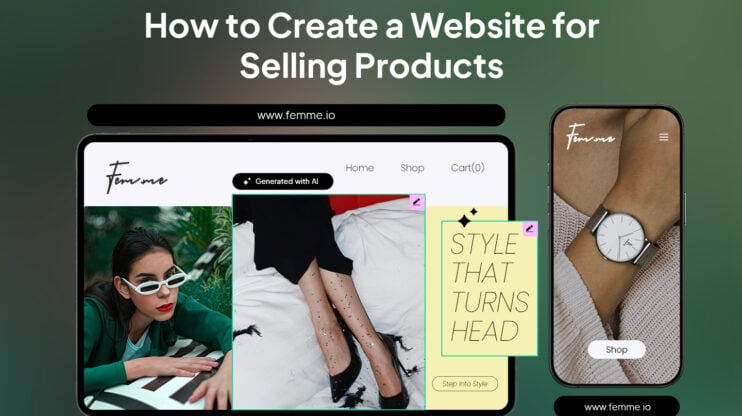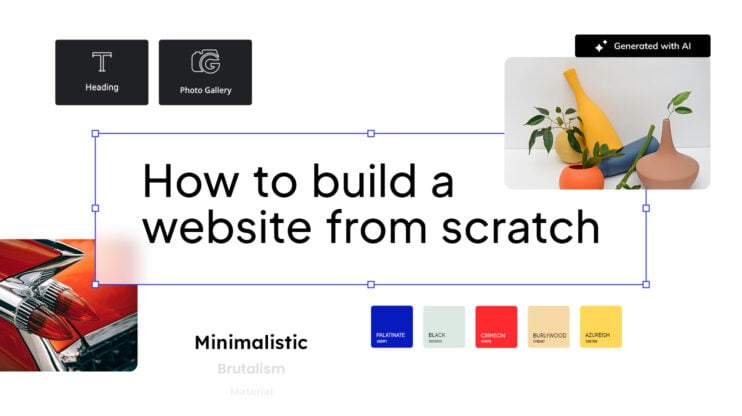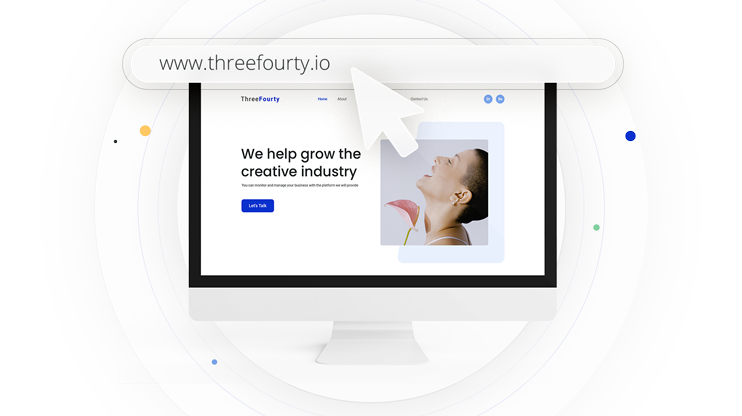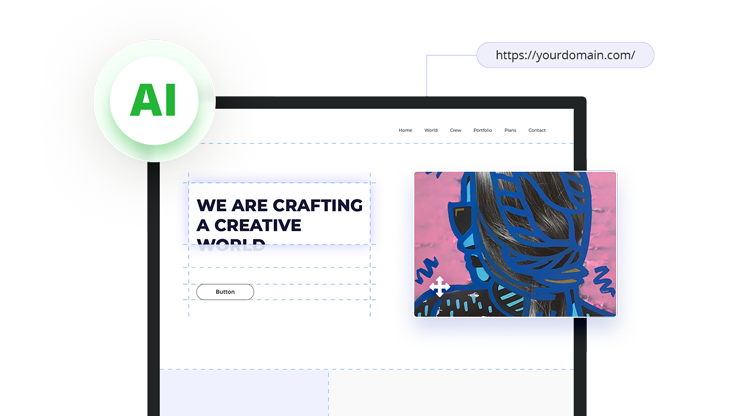Back when I was trying to grow my own brand, one question wouldn’t leave me alone: how to get more clients? That question shows up early when you’re freelancing, and it sticks around even when you start building an agency.
I experimented a lot: sent hundreds of cold emails (each with a different engagement method), nervously networked at conferences, tried working with microinfluencers, and had dozens of calls with growth experts. None of it felt scalable, or like I actually knew what I was doing, but some of it helped me land new clients and learn what stuck.
One of the key lessons I learned was that you can have the right skills and a solid portfolio, and still no one knocks on your door if:
- your offer isn’t clear or valuable enough
- you’re not layering the right strategies in the right order for people to find you, trust you, and book you
So in this guide, we’ll be going beyond the generic advice. You’ll get 13 proven, practical strategies, plus tools that help you move faster, look more professional, and deliver client work more efficiently. If you’re freelancing solo, this will help you attract new clients and turn early interest into real work. If you’re running a small agency, these are the systems that let you scale without burning out.
Build trust first
Before you start thinking about growth hacks or paid ads, focus on trust. It’s the real driver behind conversions, and the reason a lot of outreach efforts fall flat. Clients rarely choose the cheapest or flashiest option. They go with the one that feels most credible. That’s why this first step is about dialing in your positioning, proof, and presence, so that when someone lands on your site or talks to you, choosing you feels like the obvious next step.
1. Define your ideal client
You can’t attract the right people if you don’t know who you’re speaking to. This sounds basic, but too many freelancers and agencies build a generic offer hoping it “applies to everyone.” It never works. Instead, narrow your focus. Use this simple positioning question by answering which you can build a framework:
“I help [who] do [what] so they can [result].”
For example, “I help small ecom stores set up fast, mobile-friendly sites that convert.” Be as specific as you can and try to speak to a real pain point your client has. The more specific you are, the easier it becomes to write your site copy, create offers, and stand out in your space.
2. Clarify what makes your offer valuable
Even if you’re new, you do have value, but if you’re not clear on what that value is, figuring out how to get more clients becomes a lot harder. Most people default to selling features: “I build websites,” “I do social media.” But clients want outcomes: faster growth, less stress, more customers.
Try shifting your offer from “I build websites” to “I create client-ready sites that load fast, look great, and help you convert visitors into leads.” This way you’re offering speed, reliability, and a better outcome for your clients.
3. Show instant trust signals
Clients don’t want to gamble. They want to feel safe choosing you. If you’re early in your journey, building credibility can feel like a chicken-and-egg problem: no clients means no testimonials, which makes getting clients harder. Here’s how to shortcut that trust loop:
- Ask for peer testimonials (from classmates, past collaborators, previous jobs)
- Show before/after site improvements with real metrics (site speed, SEO score, mobile UX)
- Get micro-PR: write on Medium, guest post in niche newsletters, or get a quote published
- Have a professional website to signal that you’re serious and give potential clients a clear next step
If you don’t have one yet, you can build it quickly with tools like 10Web AI Website Builder in 3 simple steps:
- Describe your site: Who it’s for, what you offer, and what goal it should achieve. The more specific, the better (as you learned in the previous step).
- Get a full website and edit (if you want): The AI generates a custom site based on your input. Then you can fine-tune everything: layouts, colors, fonts, and content.
- Publish and go live: Launch with your own domain, then continue editing as you grow. With 10Web’s AI Co-Pilot, you can make real-time changes just by describing what you want to adjust.
If you’re freelancing, this helps you look legit fast. If you’re running a small agency, it’s an easy way to present a polished, branded presence from day one.
For agencies, you can use the agency plan to provide white-label services as well. We’ll talk about this powerful tool in section 13, when we discuss how to make your offer stand out among others.
Add scalable, AI-powered WordPress site generation to your product - under your brand, on your terms.
Launch branded websites at scale
Get found consistently
If you’re figuring out how to get more clients, visibility is the part most people skip too soon. To get more clients, you need to consistently show up in the places where your ideal clients already are and give them a reason to check you out.
4. Show up where your clients already spend time
Being on every platform, like trying to target everyone, doesn’t just drain your time – it dilutes your message, your positioning, and the value of what you offer. You just need to be visible in the right places, not all the places. Let’s think about your ideal client: where do they go to solve problems? Where do they learn? Where do they vent?
Start by focusing on one or two of these:
- LinkedIn: Still one of the leading platforms for B2B service providers.
- Podcasts and niche newsletters: Reach out to guests on industry-specific shows or contribute a short tip to curated roundups.
- Communities and forums: Places like IndieHackers, r/smallbusiness, and Slack groups are full of potential clients asking questions.
If you’re short on time, repurpose the same insight across platforms. A quick LinkedIn post can double as a comment reply, email snippet, or even a podcast pitch.
5. Make your proof easy to find
People need to see that others have trusted you before they do. But that doesn’t mean you need a massive portfolio or 20 glowing testimonials. Small signals can still build big trust, if they’re visible. What to share:
- Screenshots of results or improvements: SEO jumps, page speed, UX upgrades
- Client quotes: Even short messages or Slack feedback can count
- Before/after visuals: Show what you improved and why it matters
- Your own branding: A polished, on-brand portfolio or site adds authority
6. Share value without burning out
Blogging and SEO are powerful long-term plays. If you’re willing to put in consistent effort, they can give you ongoing visibility and lead flow. But they’re not quick wins. You probably won’t see much traction from a blog in your first few weeks or even months. That’s normal.
In the short run, your visibility strategy should focus on something else: delivering immediate value to potential clients wherever they find you. Your content should give people a reason to stay, remember you, and see you as a go-to expert.Here are a few lightweight ways to share value that builds trust:
- One-page value guides: Example: “5 things to fix on your website before you run ads.” Simple, actionable, and sharable.
- LinkedIn carousels or threads: Teach something useful, show a behind-the-scenes, or break down how you solved a real client problem.
- Mini case studies or quick wins: Example: “Launched a new site in 1 day. The gym got 4 new bookings the first week.” Short, real, and results-driven.
- Recycled content: Turn a screen recording or call walkthrough into a post, or pull a smart quote from a client conversation into a testimonial.
These don’t take much time, and they can live anywhere: on your website, in your outreach emails, inside proposals and anywhere you want to make a strong first impression with new clients. The goal is always the same: deliver enough value that people trust you before they even talk to you.
Do outreach that feels human
Outreach still works, but only when it doesn’t feel like spam. The days of blasting 100 identical cold emails are over. People want to feel like you understand their business, not like they’re one of 50 leads in a spreadsheet.
Smart outreach is personal, helpful, and gives people a reason to reply, even if it’s just to say “that’s interesting, tell me more.” This is a key shift if you’re wondering how to get more clients without sounding like yet another agency or freelancer.
7. Personalize your cold emails the right way
Your go-to strategy with cold emails from now on should be making it feel like a real person wrote it with care. There are two formats you can try:
1. Value-first approach
This method works best when you want to build trust by showing you’ve done your research. You’re not asking for anything upfront. You’re simply sharing something helpful. Here’s what that might sound like:
Subject line: Quick site suggestion
Hey [Name],
I was browsing [site/business] and noticed a couple of quick wins you could implement to improve [conversion speed, trust, etc.]. I put together a short walkthrough here: [Loom link or page]. I do [your service] for [your type of clients], and I thought this might be helpful, even if you’re not looking to work together right now.
Happy to chat if it sparks anything.
– [Your Name]
2. Low-commitment ask
This one is better if you want to gauge interest without making a direct pitch. It’s short, casual, and easy to ignore, but that’s actually the point. You’re testing the waters and giving them an easy way to say yes without feeling pressured. Here’s how it might look:
Subject line: Quick idea for [company name]
Hey [Name],
I had an idea that could improve [X result] for your site. I mocked something up: it’s quick, and you don’t need to reply unless you’re curious. Want me to send it over?
– [Your Name]
Both approaches are designed to feel human, respectful, and helpful, which is what makes them stand out in inboxes full of generic pitches. If you choose the second option, you can even create quick demo sites in minutes with 10Web. Personalizing them for a prospect takes very little time but can lead to huge response rates.
8. Offer low-stakes ways to work with you
Not everyone is ready to commit to a full project after one message, but if you give people a small, helpful preview of what it’s like to work with you, the conversation gets easier. Try offering:
- A free homepage review (via Loom, call, or audit doc)
- A quick demo site to show how their site could look or work better
- A short UX or SEO checkup
Don’t think of this as “free work.” These are strategic ways to show your thinking, your process, and your attention to detail.
Make it easy to say yes
When a potential client says “I’m interested,” the last thing you want is to lose them in a maze of back-and-forth emails, unclear steps, or awkward proposals. The easier you make it to start working with you, the more likely they are to follow through, and that’s a big part of how to get more clients consistently. This part of your process should feel smooth, professional, and low-effort on their end, especially if they’re talking to other service providers at the same time.
9. Set up a simple, client-friendly path forward
Clients aren’t always sure what to do next. If you make the process clear, you’ll immediately feel easier to work with. At minimum, your booking process should include:
- A scheduling tool: Something like Calendly or TidyCal with pre-set availability
- An intake or project brief: Keep it short and structured; ask only the essentials
- A thank-you email: Confirm the meeting, restate your value, and include a next step
10. Build trust into the final decision
Even if someone seems ready to hire you, they’ll often pause right before signing. That hesitation is normal, but you can prepare for it. Here’s how to reinforce trust and help them feel confident moving forward:
- Create a mini-case study: Walk through a past project, highlight the results, and share what the client said
- Address common objections upfront: Timeline concerns, revision process, pricing transparency, or platform choices
- Follow up with purpose: If they go quiet, send one or two helpful nudges with context
If you’re using 10Web, you can even show them what their site could potentially look like before they commit, nothing sells like a live demo.
Keep clients coming back, and bringing others with them
Getting a new client is hard work. Keeping them and turning them into a source of future business is where real momentum happens. A lot of freelancers and agencies lose potential long-term value because they treat projects like one-and-done deals. But with the right systems in place, you can turn happy clients into consistent income and your best source of referrals.
11. Make referrals easy (and natural)
Referrals still convert better than other channels, especially when they bring in new customers who already trust you by association. However, you have to make them frictionless. Most clients won’t think to recommend you unless you give them a reason and a simple way to do it. Here’s how:
- Reach out after a successful project with a short note:
“I loved working on [project]. If you know someone who could use help with something similar, feel free to send them my way, I’ll take good care of them.”
- Make it feel like a favor to the other person, not just you. You’re helping their friend/client/team solve a problem.
- Offer a light reward if you want, but it doesn’t have to be cash. A discount, a free audit, or even a simple thank-you gift can work.
12. Offer recurring value without extra effort
Once you’ve delivered a successful project, it’s the perfect time to offer ongoing support. Many clients don’t want to manage updates, tech fixes, or performance issues. They just want things to work. Simple monthly offers you can pitch:
- Website care plans: Updates, backups, security
- Hosting and monitoring: Remove the tech stress from their plate
- Analytics and strategy check-ins: Send monthly summaries with a few suggestions
If you’re working with multiple clients, managing all that manually becomes a burden fast. That’s where systems like 10Web White Label Hosting and Website Builder for agencies can help you. It lets you deliver secure, fast, managed hosting under your own brand, with zero tech maintenance. You stay the point of contact, they get reliable support, and you earn a monthly income without scaling your team.
You can package this as an upgrade after the project ends, or even include the first month free to make it frictionless.
13. For agencies: How to get more clients with better offers
In the very beginning, we talked about what holds most service businesses back: Even if you’re great at what you do, no one knocks unless your offer is clear, valuable, and easy to trust. And if you’re trying to figure out how to get more clients, especially as an agency, one of the fastest ways to improve your offer is by bundling website creation, delivery, and hosting into a single, smooth experience. That’s exactly what 10Web’s white labeled website builder tools help you do.
Option 1: White Label Website Builder
Best if you don’t have your own platform or backend.
You get a fully customizable dashboard: your branding, your domain, your pricing. It’s powered by 10Web’s AI, but your clients will only see your agency. You can:
- Instantly generate full WordPress websites with AI (layouts, images, and copy included)
- Offer your clients an easy drag-and-drop visual editor (based on Elementor, fully white-labeled)
- Manage everything in one place: domains, SSL, backups, performance, and more
- Set up new clients in minutes, without writing code or setting up hosting from scratch
It’s like adding a full productized service arm to your agency, without the dev overhead.
Add scalable, AI-powered WordPress site generation to your product - under your brand, on your terms.
Launch branded websites at scale
Option 2: Website Builder API
Best if you already have a platform, product, or custom backend.
With the 10Web API, you can plug AI-powered website generation and hosting directly into your own system. This gives you total control over user experience and automation. Built for scale:
- Generate and deploy WordPress websites via REST API
- Control layouts, content, and plugins automatically
- Manage performance, hosting, domains, and more—without ever touching cPanel
- Use SDKs in Node.js, PHP, Python, and manage webhooks or user permissions however you want
Whether you’re onboarding dozens of SMB clients per week or building a vertical SaaS platform, this lets you offer instant site creation with zero infrastructure burden.
See how easy it is to integrate AI website generation into your platform!
Request your API demo now
What’s included (both plans):
- 100% white-labeled experience: Your logo, voice, and domain
- Managed WordPress hosting: Secure, fast, reliable (99.99% uptime, SSD containers, smart caching)
- WooCommerce support: Launch stores with full product catalogs and payment options
- Domain & SSL management: All from your dashboard or via API
- Built-in automation: No manual plugin updates, DNS edits, or performance checks
- Dedicated onboarding & support: With access to developer docs, Slack support, and a personal success manager
Why it matters
This way, you’re not just selling websites. You’re selling outcomes: speed, professionalism, and confidence. These tools help you deliver polished, scalable solutions without piling on dev time, plugins, or hosting stress. Clients see fast results. You stay in control. Your brand stays front and center.
Let’s choose 2 tactics & 1 tool to start
You don’t need to do all 13 things at once. That’s a fast track to burnout, not growth. Instead, pick 2 tactics you can act on today. Maybe it’s cleaning up your positioning, sending a personalized outreach message, or finally sharing that client win. Start where there’s energy, and build from there.
The goal is simple: get one small win, then systematize it. That’s how momentum builds and how you start mastering how to get more clients. And if you want your offer to stand out 10X more than your competitors? Use the right tool to turn your service into a high-value experience.
With 10Web’s White Label Builder or Website Builder API, you can give your clients a fully branded, done-for-them website experience, without spending hours on dev work or managing hosting. It’s fast, clean, and scalable, and most of your competitors aren’t doing it yet. If your current offer is good, this makes it exceptional. If it’s already great, this turns it into an unfair advantage.
Add scalable, AI-powered WordPress site generation to your product - under your brand, on your terms.
Launch branded websites at scale
FAQ
What is the best way to get more clients? Why am I struggling to get clients? How do I get clients with no experience? What are the 4 P's that improve customer service? How do I get my first few clients with no credibility? What should I charge when starting out? How do I approach businesses without being ignored? Should I keep prices low if I have no portfolio? How do I scale beyond referrals? What methods build long-term brand trust? How can I automate lead generation that still feels personal? What’s the best way to generate leads without outbound calls?
Add scalable, AI-powered WordPress site generation to your product - under your brand, on your terms.
Launch branded websites at scale












